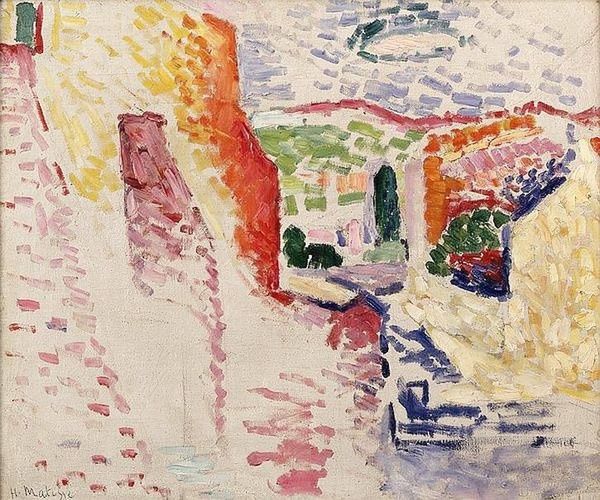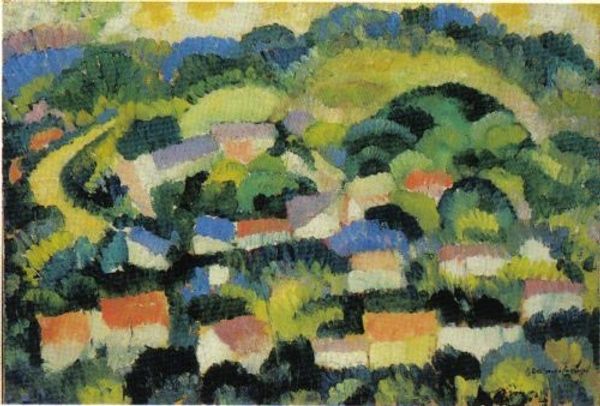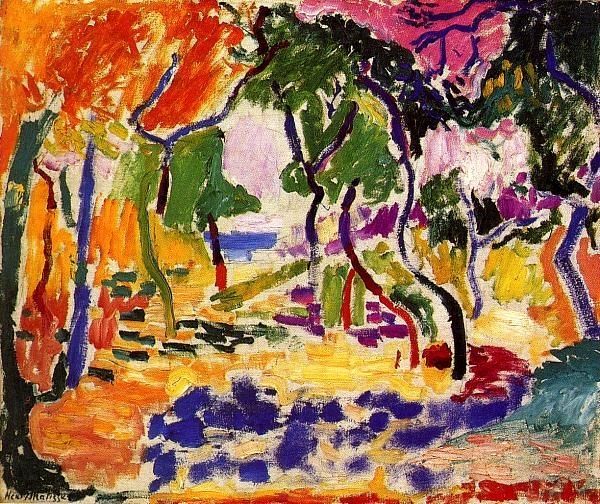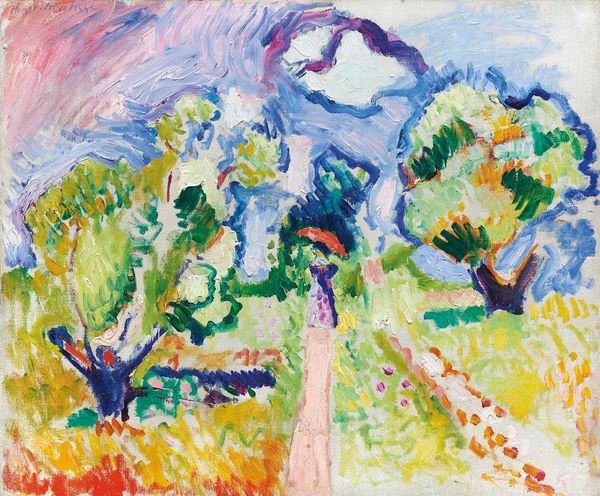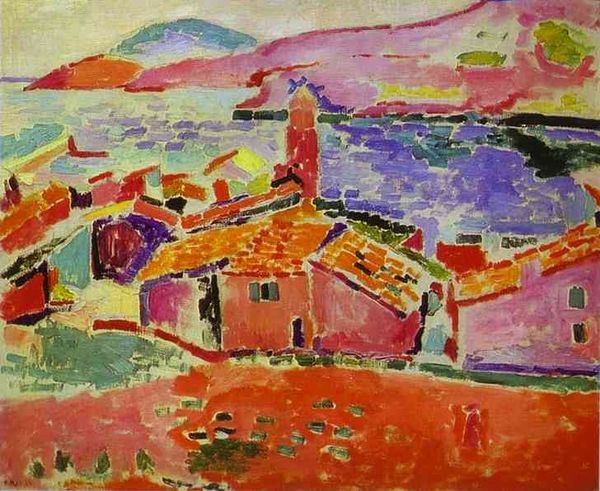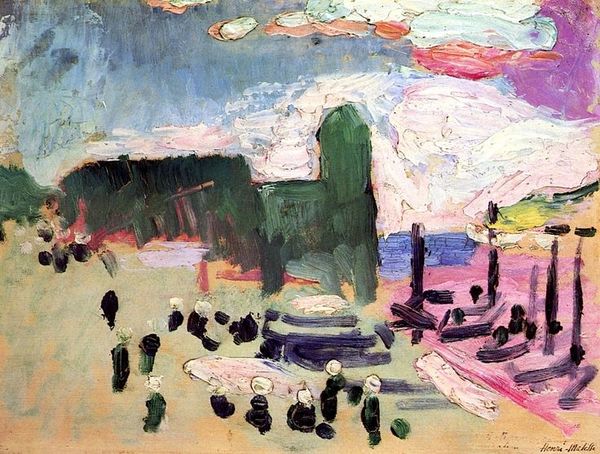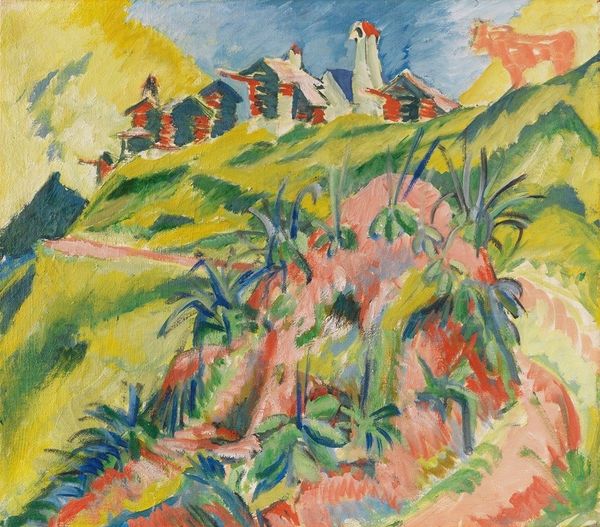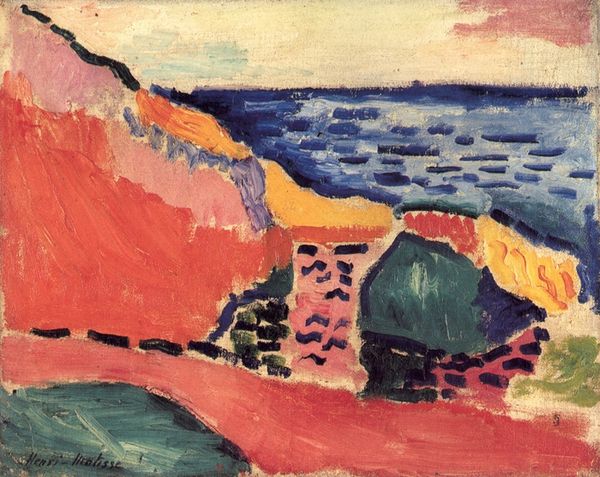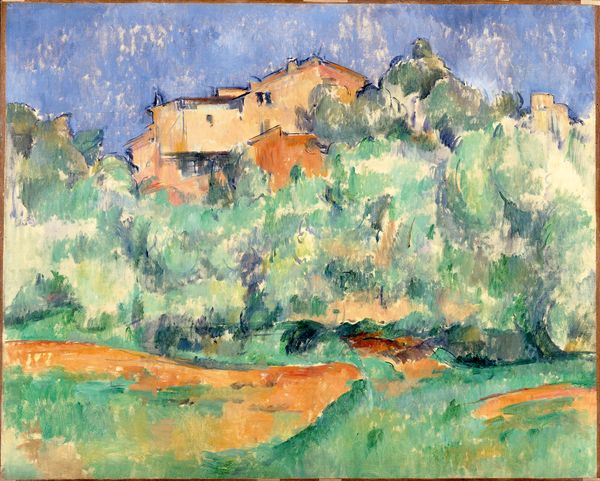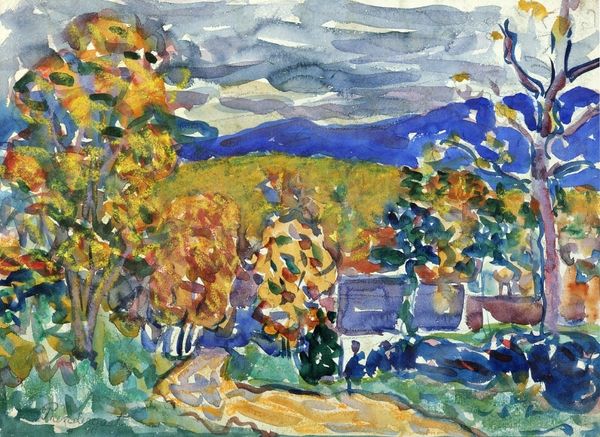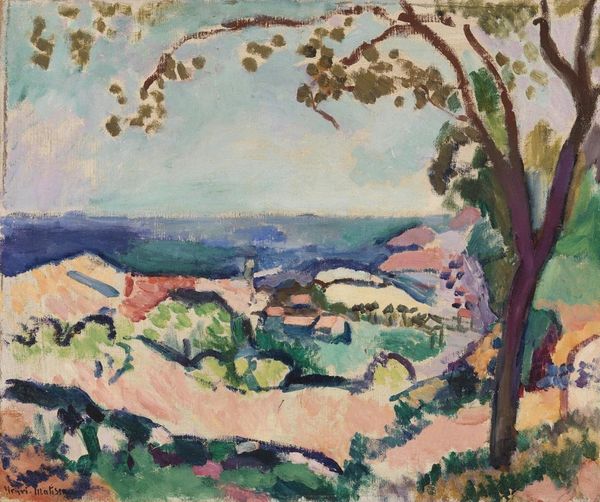
painting, oil-paint
#
fauvism
#
fauvism
#
painting
#
oil-paint
#
landscape
#
post-impressionism
#
modernism
Copyright: Public domain US
Editor: This is "Les Genêts," painted by Henri Matisse in 1905, using oil paint. The colors are so vibrant! It almost feels like I could reach out and touch the texture of the flowers. What strikes you about this painting? Curator: What strikes me is the relationship between the artist, the canvas, and the manufactured color. Consider the oil paint itself, a product of industrial chemistry. It liberated artists like Matisse. They were no longer grinding pigments; instead, intense color was readily available, allowing for works such as these landscapes and the broader development of movements like Fauvism. Editor: So, the availability of materials really shaped the art being made? Curator: Precisely! The move toward these industrially-created vibrant pigments marks a shift away from traditional landscape painting toward something new: prioritizing color and its application on a surface plane. The physicality of applying paint becomes a vital element of expression. What are your thoughts? Editor: I guess I never really thought about where the materials came from, how industrial processes might be changing the whole art world, and how different movements grew up around these shifts. Thanks! Curator: It is this dialectical relationship between available resources and production, coupled with intention, that shaped a lot of modern art, from painting to sculpture. The ease of the readymade in some sense builds off of this trajectory. Editor: So by really investigating the “stuff” art is made of and where it comes from, we can gain deeper insight. Food for thought!
Comments
No comments
Be the first to comment and join the conversation on the ultimate creative platform.
